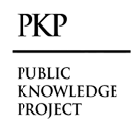Antibody Microarrays as an Experimental Platform for the Analysis of Signal Transduction Networks, Protein Profiling, Semiquantitative Approaches, Quantification of Protein Phosphorylation, Autoimmune and Neurodegenerative diseases
Keywords:
Antibody Microarrays, Protein Profiling, Protein Phosphorylation, Autoimmune, Neurodegenerative diseasesAbstract
Current approaches' low sensitivity and sample capacity are major obstacles to time-resolved quantitative signalling network characterisation. Protein abundance and phosphorylation may now be quantitatively and comprehensively determined using antibody microarrays, an exciting new experimental platform. This study provides a concise overview of the evolution of quantitative microarray applications that use antibody-based capture of target proteins. Future applications will also rely heavily on antibody microarrays that use fluorescence detection. Nonetheless, there are workarounds for both approaches, and developments towards a nanoarray design that reduces the array format to a more manageable size show promise. Even though this form of microarray readout is not yet available for common use, significant strides were also achieved in the area of label-free detection. Finally, a standard method for quantitative investigation of signal transduction networks is now available: quantitative antibody microarray applications. Methods for detecting signals, detection limits, data processing, producing antibody microarrays, and finding the right detection and capture antibody pairs are all covered in depth.
Downloads
References
Korf U, Derdak S, Tresch A, Henjes F, Schumacher S, Schmidt C, Hahn B, Lehmann W, Poustka A, Beissbarth T, Klingmueller U (2008) Proteomics (in press) 3. Nielsen UB, Geierstanger BH (2004) J Immunol Methods 290:107
Paweletz CP, Charboneau L, Bichsel VE, Simone NL, Chen T, Gillespie JW, EmmertBuck MR, Roth MJ, Petricoin EF, Liotta LA (2001) Oncogene 20:1981
Sreekumar A, Nyati MK, Varambally S, Barrette TR, Ghosh D, Lawrence TS, Chinnaiyan AM (2001) Cancer Res 61:7585
Nielsen UB, Cardone MH, Sinskey AJ, MacBeath G, Sorger PK (2003) Proc Natl Acad Sci USA 100:9330 8. Gembitsky DS, Lawlor K, Jacovina A, Yaneva M, Tempst P (2004) Mol Cell Proteomics 3:1102
Ivanov SS, Chung AS, Yuan ZL, Guan YJ, Sachs KV, Reichner JS, Chin YE (2004) Mol Cell Proteomics 3:788
Usui-Aoki K, Shimada K, Nagano M, Kawai M, Koga H (2005) Proteomics 5:2396
Duffy HS, Iacobas I, Hotchkiss K, Hirst-Jensen BJ, Bosco A, Dandachi N, Dermietzel R, Sorgen PL, Spray DC (2007) J Biol Chem 282:9789
Chen SM, LaRoche T, Hamelinck D, Bergsma D, Brenner D, Simeone D, Brand RE, Haab BB (2007) Nat Methods 4:437
Bartling B, Hofmann HS, Boettger T, Hansen G, Burdach S, Silber RE, Simm A (2005) Lung Cancer 49:145
Celis JE, Moreira JMA, Cabezon T, Gromov P, Friis E, Rank F, Gromova I (2005) Mol Cell Proteomics 4:492
Smith L, Watson MB, O’Kane SL, Drew PJ, Lind MJ, Cawkwell L (2006) Mol Cancer Ther 5:2115
Wang J, Laschinger C, Zhao XH, Mak B, Seth A, McCulloch CA (2005) Biochem Biophys Res Commun 330:123
Lin HJ, Hsieh FC, Song H, Lin J (2005) Br J Cancer 93:1372
Löbke C, Laible M, Rappl C, Sahin Ö, Arlt D, Wiemann S, Poustka A, Sültmann H, Korf U (2008) Proteomics 8:1586–1594
Ghatnekar-Nilsson S, Dexlin L, Wingren C, Montelius L, Borrebaeck CAK (2007) Proteomics 7:540
Wingren C, Borrebaeck CAK (2007) Drug Discov Today 12:813
Angenendt P, Glokler J, Murphy D, Lehrach H, Cahill DJ (2002) Anal Biochem 309:253 22. Angenendt P, Glokler J, Sobek J, Lehrach H, Cahill DJ (2003) J Chromatogr A 1009:97
Guilleaume B, Buness A, Schmidt C, Klimek F, Moldenhauer G, Huber W, Arlt D, Korf U, Wiemann S, Poustka A (2005) Proteomics 5:4705
Seurynck-Servoss SL, White AM, Baird CL, Rodland KD, Zangar RC (2007) Anal Biochem 371:105
Lv LL, Liu BC, Zhang CX, Tang ZM, Zhang L, Lu ZH (2007) Electrophoresis 28:406 Antibody Microarrays in the Analysis of Signal Transduction Networks 175
Kim SJ, Park Y, Hong HJ. Antibody engineering for the development of therapeutic antibodies. Mol Cells. 2005;20(1):17–29.
Maynard J, Georgiou G. Antibody engineering. Annu Rev Biomed Eng. 2000;2:339–76.
Muyldermans S. Nanobodies: natural single-domain antibodies. Annu Rev Biochem. 2013;82:775–97.
Zahnd C, Amstutz P, Pluckthun A. Ribosome display: selecting and evolving proteins in vitro that specifcally bind to a target. Nat Methods. 2007;4(3):269–79.
Chandra H, Reddy PJ, Srivastava S. Protein microarrays and novel detec tion platforms. Expert Rev Proteomics. 2011;8(1):61–79.
Yang L, Guo S, Li Y, Zhou S, Tao S. Protein microarrays for systems biology. Acta Biochim Biophys Sin (Shanghai). 2011;43(3):161–71.
Bergsma D, Chen S, Buchweitz J, Gerszten R, Haab BB. Antibodyarray interaction mapping, a new method to detect protein complexes applied to the discovery and study of serum amyloid P interactions with kininogen in human plasma. Mol Cell Proteomics. 2010;9(3):446–56.
He HJ, Zong Y, Bernier M, Wang L. Sensing the insulin signaling pathway with an antibody array. Proteomics Clin Appl. 2009;3(12):1440–50.
Ivanov SS, Chung AS, Yuan ZL, Guan YJ, Sachs KV, Reichner JS, Chin YE. Antibodies immobilized as arrays to profle protein posttranslational modifcations in mammalian cells. Mol Cell Proteomics. 2004;3(8):788–95.
Rucker VC, Havenstrite KL, Herr AE. Antibody microarrays for native toxin detection. Anal Biochem. 2005;339(2):262–70.
Sanchez-Carbayo M. Antibody microarrays as tools for biomarker discovery. Methods Mol Biol. 2011;785:159–82.
Sutandy FX, Qian J, Chen CS, Zhu H. Overview of protein microarrays. Curr Protoc Protein Sci. 2013;27:1.
Li J, Zhao W, Akbani R, Liu W, Ju Z, Ling S, Vellano CP, Roebuck P, Yu Q, Eterovic AK, et al. Characterization of human cancer cell lines by reverse-phase protein arrays. Cancer Cell. 2017;31(2):225–39.
Gujral TS, Karp RL, Finski A, Chan M, Schwartz PE, MacBeath G, Sorger P. Profling phospho-signaling networks in breast cancer using reversephase protein arrays. Oncogene. 2013;32(29):3470–6.
Berrade L, Garcia AE, Camarero JA. Protein microarrays: novel develop ments and applications. Pharm Res. 2011;28(7):1480–99. 18. Mirus JE, Zhang Y, Li CI, Lokshin AE, Prentice RL, Hingorani SR, Lampe PD. Cross-species antibody microarray interrogation identifes a 3-pro tein panel of plasma biomarkers for early diagnosis of pancreas cancer. Clin Cancer Res. 2015;21(7):1764–71.
Borrebaeck CA, Sturfelt G, Wingren C. Recombinant antibody micro array for profling the serum proteome of SLE. Methods Mol Biol. 2014;1134:67–78.
Drobin K, Nilsson P, Schwenk JM. Highly multiplexed antibody sus pension bead arrays for plasma protein profling. Methods Mol Biol. 2013;1023:137–45.
Schwenk JM, Gry M, Rimini R, Uhlen M, Nilsson P. Antibody sus pension bead arrays within serum proteomics. J Proteome Res. 2008;7(8):3168–79.
Neiman M, Fredolini C, Johansson H, Lehtio J, Nygren PA, Uhlen M, Nils son P, Schwenk JM. Selectivity analysis of single binder assays used in plasma protein profling. Proteomics. 2013;13(23–24):3406–10.
Saxton RA, Sabatini DM. mTOR signaling in growth, metabolism, and disease. Cell. 2017;168(6):960–76.
Fruman DA, Chiu H, Hopkins BD, Bagrodia S, Cantley LC, Abraham RT. The PI3 K pathway in human disease. Cell. 2017;170(4):605–35.
Brannmark C, Nyman E, Fagerholm S, Bergenholm L, Ekstrand EM, Ced ersund G, Stralfors P. Insulin signaling in type 2 diabetes: experimental and modeling analyses reveal mechanisms of insulin resistance in human adipocytes. J Biol Chem. 2013;288(14):9867–80.
Boucher J, Kleinridders A, Kahn CR: Insulin receptor signaling in normal and insulin-resistant states. Cold Spring Harb Perspect Biol 2014, 6(1).
Bezprozvanny I. Calcium signaling and neurodegenerative diseases. Trends Mol Med. 2009;15(3):89–100.
Yang Y, Lian S, Meng L, Qu L, Shou C. Antibody array revealed PRL-3 afects protein phosphorylation and cytokine secretion. PLoS ONE. 2017;12(1):e0169665.
Dexlin-Mellby L, Sandstrom A, Antberg L, Gunnarsson J, Hansson SR, Borrebaeck CA, Wingren C. Design of recombinant antibody microar rays for membrane protein profling of cell lysates and tissue extracts. Proteomics. 2011;11(8):1550–4.
Mahlknecht P, Stemberger S, Sprenger F, Rainer J, Hametner E, Kirchmair R, Grabmer C, Scherfer C, Wenning GK, Seppi K, et al. An antibody microarray analysis of serum cytokines in neurodegenerative Parkinso nian syndromes. Proteome Sci. 2012;10(1):71.
Zhang D, Qin Y. The paradox of elongation factor 4: Highly conserved, yet of no physiological signifcance? Biochem J. 2013;452(2):173–81.
Gao Y, Bai X, Zhang D, Han C, Yuan J, Liu W, Cao X, Chen Z, Shangguan F, Zhu Z, et al. Mammalian elongation factor 4 regulates mitochon drial translation essential for spermatogenesis. Nat Struct. Mol Biol. 2016;23(5):441–9.
Bergers G, Benjamin LE. Tumorigenesis and the angiogenic switch. Nat Rev Cancer. 2003;3(6):401–10.
Lee Y, Kang DK, Chang SI, Han MH, Kang IC. High-throughput screening of novel peptide inhibitors of an integrin receptor from the hexa peptide library by using a protein microarray chip. J Biomol Screen. 2004;9(8):687–94.
Bang JY, Kim EY, Kang DK, Chang SI, Han MH, Baek KH, Kang IC. Pharmacoproteomic analysis of a novel cell-permeable peptide inhibitor of tumor-induced angiogenesis. Mol Cell Proteomics. 2011;10

Downloads
Published
How to Cite
Issue
Section
License

This work is licensed under a Creative Commons Attribution 4.0 International License.
Current Clinical and Medical Education













